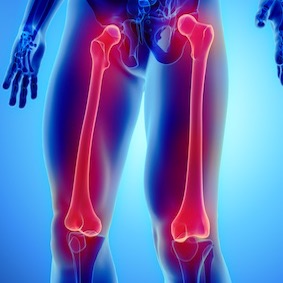What is Peripheral Artery Disease (PAD)?
When you’re walking, your legs require more oxygen than when standing still. Arteries carry oxygen-rich blood. With PAD (intermittent claudication), atherosclerosis has narrowed the arteries. This reduces the blood flow and, as a consequence, reduces the amount of oxygen that is carried to the legs. This can cause painful symptoms.
PAD complaints and symptoms
After a short walk, people with PAD often experience a painful ache, a cramp or a feeling of tiredness in their legs. Some experience the symptoms with normal activity while others only notice it during more intense exercise. People who have had PAD for some time can experience cold feet due to a thinning of the fatty layer directly under the skin. PAD can occasionally cause thickened nails. A sore in your foot or leg can take longer to heal or even fester. An especially intense work out requires more oxygen so symptoms will therefore develop more rapidly. Cold weather will also trigger symptoms because the cold causes your arteries to narrow.
PAD prevalence and who it affects
The chances of developing peripheral artery disease increase at an older age. Smoking is by far the greatest risk factor for PAD. Other factors that increase your chance of developing PAD include high blood pressure, diabetes, obesity, inactivity and a family history of PAD. Any combination of these factors generates an even higher risk. This means that if, for instance, you smoke and suffer from obesity, your risk of developing PAD increases even more. Your risk factor increases similarly if one of your parents developed cardiovascular disease before the age of 60, or if you suffer from high cholesterol. The risk factors for peripheral artery disease are similar to those for cardiovascular disease.
Self-help for PAD
For smokers it is advisable to quit as soon as possible. Smoking damages your arteries, which become narrower as a result. Your GP will be able to provide you with the necessary support. It is important to keep active, even when you’re in pain, because a daily walk or daily exercise improves the circulation in your legs. After a while you will notice you can stay active and symptom-free for longer periods of time.
If you suffer with obesity it is recommended to lose weight. If you carry less weight, there is less strain on your muscles which results in a longer, pain-free walk. It is also important to take good care of your feet, especially if you also suffer with diabetes. This will stop sores from festering and avoids a poor healing process.
Book an appointment
Physiotherapy treatment for PAD
A physiotherapist can help you to improve your symptoms and makes sure the risk of atherosclerosis is limited. The physiotherapist will help you find the right way to stay active. Walking workouts can improve your co-ordination and endurance. The physiotherapist aims to demonstrate how a healthy lifestyle can help you to manage your symptoms independently. He can show you how you can keep active by yourself and how to live a healthy life. Exercising accordingly will be hugely beneficial in the long run. Cardiothoracic physiotherapists are experienced in PAD treatment. A surgical procedure may be needed for severely narrowed arteries. Angioplasty or an artery bypass graft can remove the blockage and restore the blood flow. After the operation you might be advised to see a physiotherapist to help with your rehabilitation.
Which other physical complaints does FysioCity treats?
Book an appointment
 NL
NL